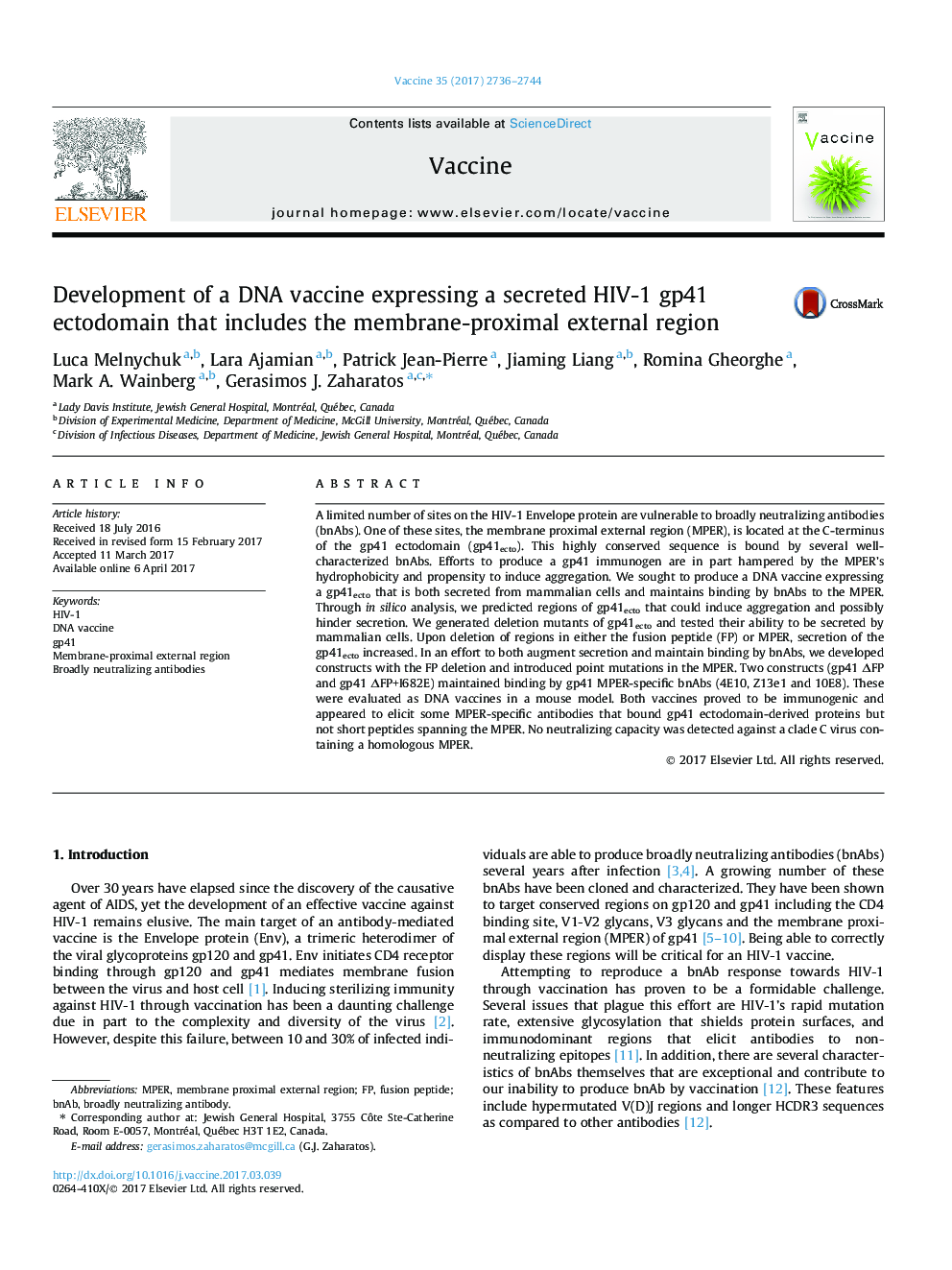| Article ID | Journal | Published Year | Pages | File Type |
|---|---|---|---|---|
| 5537071 | Vaccine | 2017 | 9 Pages |
Abstract
A limited number of sites on the HIV-1 Envelope protein are vulnerable to broadly neutralizing antibodies (bnAbs). One of these sites, the membrane proximal external region (MPER), is located at the C-terminus of the gp41 ectodomain (gp41ecto). This highly conserved sequence is bound by several well-characterized bnAbs. Efforts to produce a gp41 immunogen are in part hampered by the MPER's hydrophobicity and propensity to induce aggregation. We sought to produce a DNA vaccine expressing a gp41ecto that is both secreted from mammalian cells and maintains binding by bnAbs to the MPER. Through in silico analysis, we predicted regions of gp41ecto that could induce aggregation and possibly hinder secretion. We generated deletion mutants of gp41ecto and tested their ability to be secreted by mammalian cells. Upon deletion of regions in either the fusion peptide (FP) or MPER, secretion of the gp41ecto increased. In an effort to both augment secretion and maintain binding by bnAbs, we developed constructs with the FP deletion and introduced point mutations in the MPER. Two constructs (gp41 ÎFP and gp41 ÎFP+I682E) maintained binding by gp41 MPER-specific bnAbs (4E10, Z13e1 and 10E8). These were evaluated as DNA vaccines in a mouse model. Both vaccines proved to be immunogenic and appeared to elicit some MPER-specific antibodies that bound gp41 ectodomain-derived proteins but not short peptides spanning the MPER. No neutralizing capacity was detected against a clade C virus containing a homologous MPER.
Keywords
Related Topics
Life Sciences
Immunology and Microbiology
Immunology
Authors
Luca Melnychuk, Lara Ajamian, Patrick Jean-Pierre, Jiaming Liang, Romina Gheorghe, Mark A. Wainberg, Gerasimos J. Zaharatos,
